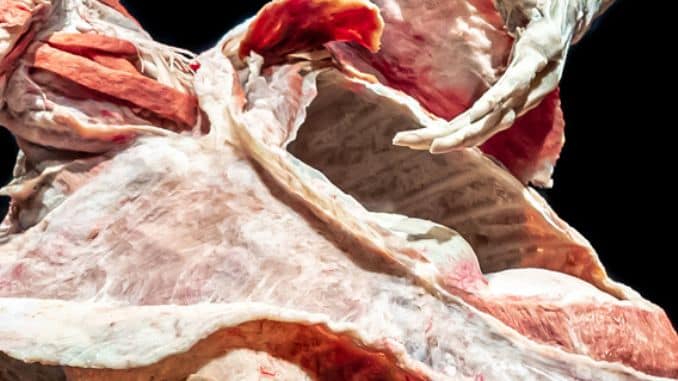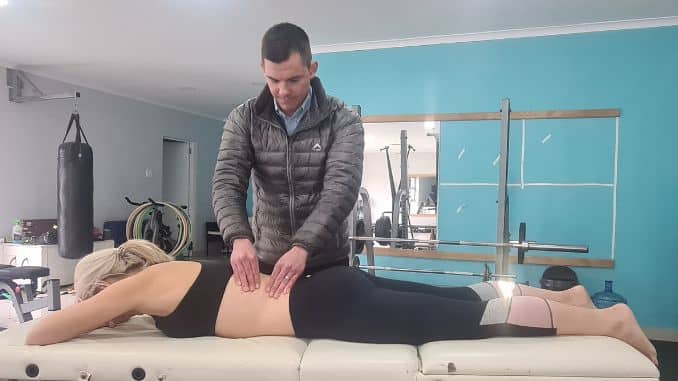
Myofascial release may be a term that sounds new to you. But before we dive into Myofascial Release Therapy, let us introduce fascia and Myofascial first. What are those, and how do they affect us?
What Is Fascia?
A fascia is like a spider web. It is close-knit and woven throughout your muscles, bones, nerves, arteries, veins, and organs. Fascia, when translated, means band, bundle, band-aid, or bandage. Your fascia runs continuously throughout your body so that each part is connected to it in some way. That’s why if there’s a clog in the tissue in one part of your body, it can cause pain in another part of your body.
Moreover, the fascia is made up of collagen and elastin fibers, which give it strength and flexibility. Myofascia (myo means muscles, fascia casing of connective tissue) refers to the connective tissue that surrounds and supports the muscles in our body.
Myofascia
The myofascial system includes not only the muscles and fascia but also the nerves, blood vessels, and other tissues that work together to support and move our bodies. The fascia also serves as a network of connective tissue that helps to distribute forces and absorb shock throughout the body.
Myofascia can become tight or restricted due to injury, overuse, or poor posture, which can cause pain, stiffness, and limited mobility. Myofascial release techniques, such as massage or stretching, can help to release tension and restore proper movement in the myofascial system, leading to improved function and reduced pain.
Myofascia Release
Myofascial release is a manual therapy that aims to relieve pain and tension in the body’s myofascial system. Myofascial release therapy is also called myofascial trigger point therapy. This is because myofascial pain originates in various trigger points in your body. These trigger points are stiff areas in your fascial tissue. They feel like small bumps, nodules, or knots in your muscles.
During myofascial release, a therapist applies gentle, sustained pressure and stretching to specific areas of the body to release tension and restore mobility. The therapist may use their hands or specialized tools to apply pressure and work through the fascia’s knots, adhesions, and trigger points.
Myofascial release can also help treat a wide range of conditions, including chronic pain, headaches, fibromyalgia, TMJ disorder, and sports injuries. It can also help improve posture, range of motion, and overall flexibility.
Myofascial Release Therapy can be done in several ways, but it’s best to work with a trained professional who can guide you and ensure that the technique is performed safely and effectively. However, here are some general steps to do a myofascial release:
Myofascia Release Therapy Method
1. Identify The Area that Needs To Be Treated
Determine the area of your body that is tight, painful, or restricting your movement. This could be a specific muscle, group of muscles, or fascial area.
2. Apply Pressure
Once you’ve identified the area, apply sustained pressure to the affected muscle or fascial area. You can use your fingers, knuckles, or specialized myofascial release tools like foam rollers or massage balls.
3. Hold The Pressure
Hold the pressure for 30-90 seconds or until you feel a release of tension or tightness in the area. You should feel a sense of relief or relaxation in the area you are targeting.
4. Stretch The Area
After applying pressure, gently stretch the area to help release any remaining tension or restriction. Then, move slowly and gently, and avoid overstretching or causing pain.
5. Repeat As Needed
You may need to repeat the process several times to achieve the desired release level.
Benefits Of Myofascial Release Therapy
-
Pain Management
You may reduce soreness, and you may also start to recover your tissues.
-
Improved Mobility
The range of motion in your muscles and joints may improve.
-
Improved Circulation
Your blood and oxygen may move more efficiently throughout your body.
-
Relaxation
Research has shown that massage therapy helps to relax your body and loosen knots.
Tension throughout your body may be released.
Indications
Myofascial release therapy may be used to treat many different health conditions.
These conditions include:
1. Myofascial Pain Syndrome
Myofascial pain syndrome is a chronic pain disorder caused by sensitivity and tightness in your tissues. The pain usually originates from specific points within your myofascial tissues called “trigger points.” It also causes pain in your connective tissues.
2. Carpal Tunnel Syndrome
Carpal tunnel syndrome is a condition that causes pain, numbness, and weakness in your hands and wrists.
3. Low Back Pain
Straining the muscles and tendons in your back causes low back pain. It causes a decrease in the motion and flexibility of your spine.
-
Temporomandibular Joint (TMJ) Disorder
This occurs when the muscles around the joints of your jaw become inflamed.
-
Fibromyalgia
Fibromyalgia is a long-term (chronic) illness that causes muscle and joint pain.
-
Chronic Migraines
Chronic migraines cause frequent throbbing headaches.
It’s important to note that Myofascial Release Therapy can be intense and uncomfortable, especially if you have a lot of tension or tightness in the area. Always start slowly and gently, and listen to your body. If you experience pain or discomfort, stop and seek the guidance of a trained professional. It is important to note that a trained professional should always perform myofascial release to ensure safe and effective treatment.
We understand that with inactivity, often comes a decrease in stability and balance, so the exercises can be completed from standing, sitting, or even from bed. Check out this Get Moving – 10 Minutes to Greater Mobility’ now!




